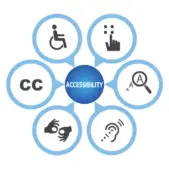For years, creating a top-notch eCommerce user experience (UX) was primarily about building a clean, intuitive desktop website. While desktop design and functionality remain important, businesses must now treat mobile UX as a cornerstone of their digital strategy—not just an afterthought.
Mobile commerce continues to outpace desktop in both traffic and transactions. As consumers increasingly turn to their mobile devices for product research, purchasing, and post-purchase engagement, the need for a robust, frictionless mobile experience has never been greater.
Expanding global eCommerce is primarily driven by consumers purchasing products and services using mobile devices. According to Statista’s Digital Market Insights, mobile commerce (m-commerce) sales have consistently increased from 43% in 2018 to a projected 63% by 2028. Mobile commerce accounts for well over 50% of all retail eCommerce.
What does that look like? Effective mobile UX design isn’t just about making things smaller—it’s about making them smarter. Below are essential design strategies that help eCommerce brands meet customer expectations and drive conversions.

Key Mobile UX Design Considerations for eCommerce Conversion
To create an effective mobile eCommerce experience, businesses must focus on key design elements that optimize the user journey and drive conversions. Some of the most critical mobile UX considerations include:
1. Prominent, Predictive Search Functionality
Mobile users often arrive with high intent—they know what they’re looking for. A clearly visible, always-accessible search bar is critical. Go a step further by integrating predictive search or voice input, helping users find products quickly without typing full queries. Support for natural language and typo correction improves the experience for busy, on-the-go users.
2. Focus on a Single, Purposeful CTA
Cluttered mobile homepages with multiple calls to action (CTAs) confuse and overwhelm users. Instead, guide users through the journey with one clear, prominent CTA. Use bold contrast, microanimations, or haptic feedback to make interactions feel intuitive and responsive—especially on smaller touchscreens.
3. Prioritize Core Features Over Feature Bloat
Mobile interfaces should focus on what matters most to the user: finding products, adding to cart, and checking out efficiently. Resist the urge to replicate your desktop experience on mobile. Instead, design with task completion in mind, delivering only the features necessary to drive forward momentum. Save the extras for deeper engagement moments, like post-purchase or loyalty experiences.
4. Enable Built-In Feedback and Behavior Tracking
Customer feedback is vital for refining the mobile experience—but don’t rely solely on surveys. Complement direct feedback with behavioral analytics tools like session replay, tap tracking, or scroll depth monitoring. These insights help pinpoint friction points, abandoned flows, or UI elements that need redesign. When you do use surveys, keep them short, contextual, and easy to dismiss.
5. Design for Performance, Accessibility, and Inclusivity
Fast load times and accessibility aren’t just nice-to-haves—they’re expectations. Ensure your mobile experience works on low-bandwidth connections, supports screen readers, and meets modern accessibility standards. Features like dark mode compatibility, scalable typography, and adaptive layouts increase usability across a diverse user base.
6. Consider a Progressive Web App (PWA) Approach
For brands that want an app-like experience without the friction of app store downloads, PWAs are a powerful option. They offer fast performance, offline capabilities, and push notifications—all within a browser. PWAs can help unify mobile and desktop experiences while increasing discoverability.
Mastering Mobile UX for eCommerce Growth
The majority of digital retail interactions now start—and often finish—on mobile devices. Businesses that prioritize smart, user-centric mobile UX design are better positioned to drive conversions, increase repeat purchases, and build long-term brand loyalty.
By focusing on high-impact elements like streamlined navigation, predictive search, performance optimization, and user feedback, your brand can deliver a mobile experience that meets rising consumer expectations—and outpaces the competition.
At UpTop, our team of mobile UX strategy and design experts can help you develop and execute a winning mobile website or application for your business. Contact us today to learn more about how we can take your digital product into the mobile-first era.


